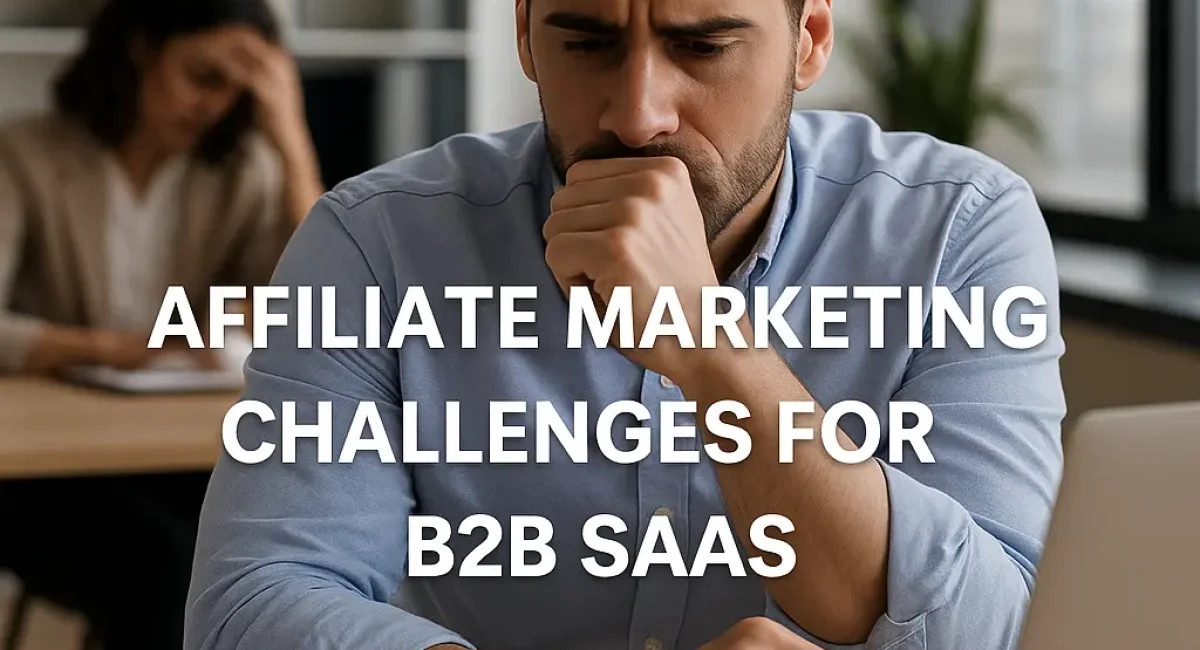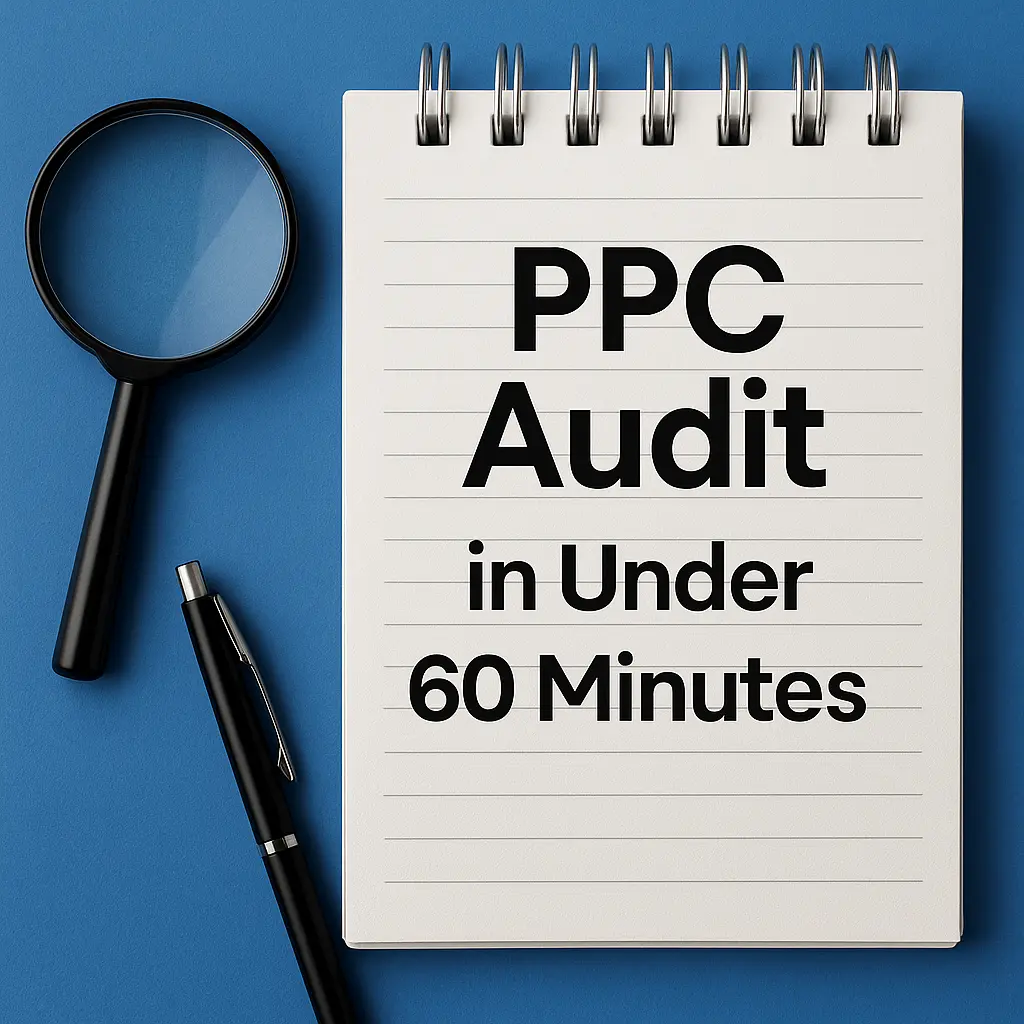Introduction
Affiliate marketing has long been a staple in consumer-driven industries, driving sales for everything from fashion to fitness gadgets. But in the B2B SaaS (Software as a Service) world, the landscape is starkly different. Companies offering complex, subscription-based solutions face unique challenges when implementing B2B affiliate programs. Unlike B2C, where impulse buys are common, B2B sales cycles are longer, decisions involve multiple stakeholders, and trust is paramount. So why do many SaaS affiliate initiatives fall flat, and how can businesses turn this channel into a revenue powerhouse?
In this article, we’ll dive deep into the pitfalls that derail most SaaS affiliate efforts—think low conversion rates, misaligned incentives, and poor targeting. More importantly, we’ll uncover actionable strategies to build high-performing programs by recruiting the right SaaS affiliates, optimizing for customer lifetime value (LTV), and incentivizing beyond one-time signups. Whether you’re a SaaS founder, marketer, or affiliate manager, you’ll find practical insights, real-world examples, and even outreach templates to kickstart your partner recruitment. Let’s explore why most programs fail and, crucially, how to fix them.
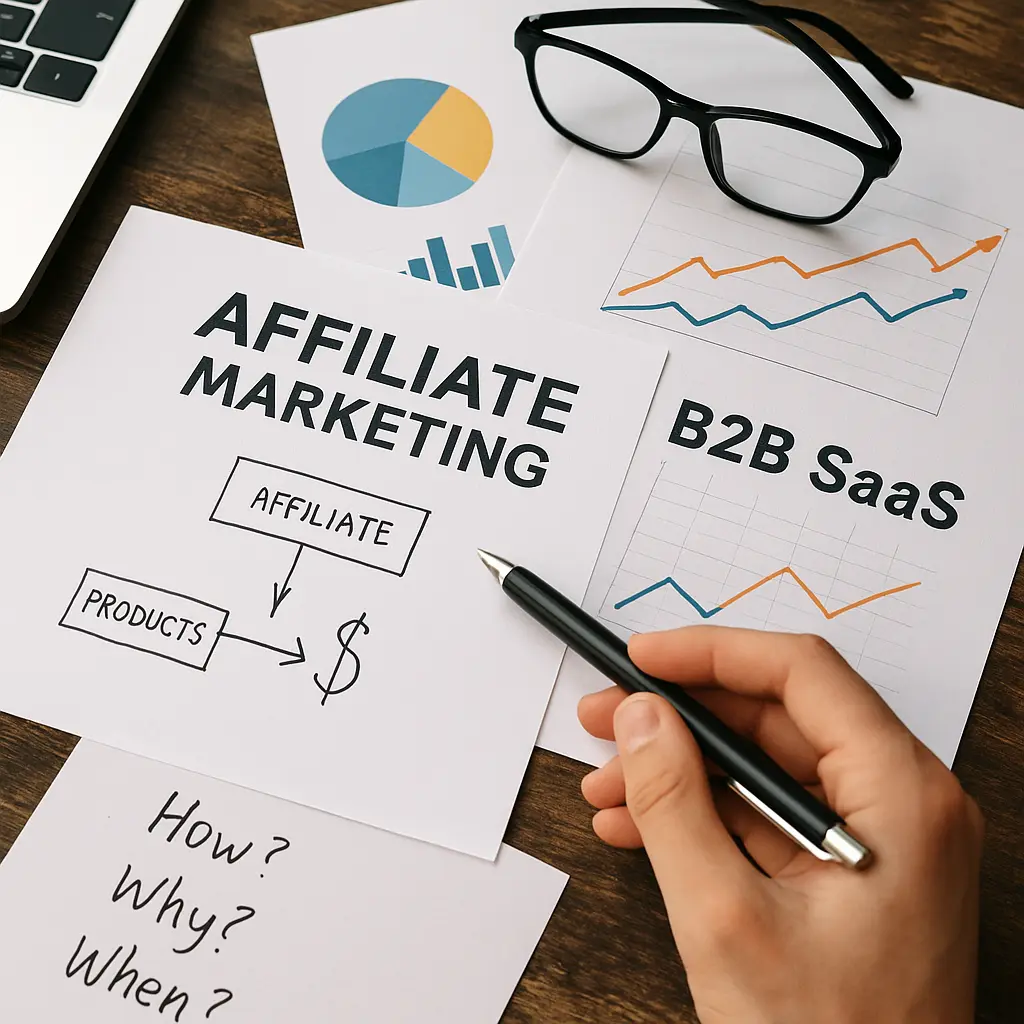
Why Most B2B SaaS Affiliate Programs Fail
Affiliate marketing in B2B SaaS isn’t a plug-and-play strategy. While the concept of paying partners for referrals sounds simple, the execution often stumbles due to systemic issues. Here are the most common reasons these programs underperform.
1. Low Conversion Rates Due to Complex Sales Cycles
B2B SaaS products often target niche audiences with specific pain points, requiring tailored messaging. Unlike B2C, where a single blog post or video can trigger a purchase, B2B buyers need whitepapers, demos, and multiple touchpoints. Affiliates accustomed to quick wins in consumer markets may struggle to nurture leads through a months-long decision process, resulting in dismal conversion rates.
2. Misaligned Incentives and Poor Commission Structures
Many SaaS companies offer one-time payouts for new signups, ignoring the subscription-based nature of their business. This fails to account for customer retention or upgrades, leaving affiliates with little motivation to promote long-term. Without a recurring commission model, partners may prioritize other programs with better rewards, even if the SaaS product is superior.
3. Unclear Value Propositions for Affiliates and Customers
If affiliates can’t articulate the value of your SaaS product—or if the product itself doesn’t solve a clear problem—they’ll struggle to drive meaningful traffic. Similarly, if the offer isn’t compelling to potential customers (e.g., no free trial or steep pricing), even the best affiliates will fail to convert. A weak value prop undermines the entire ecosystem.
4. Targeting the Wrong Affiliate Partners
Not all affiliates are created equal. Some SaaS programs recruit partners with irrelevant audiences—think lifestyle bloggers for enterprise software. Without a focused affiliate partner strategy, companies waste time and resources on partnerships that yield zero results.
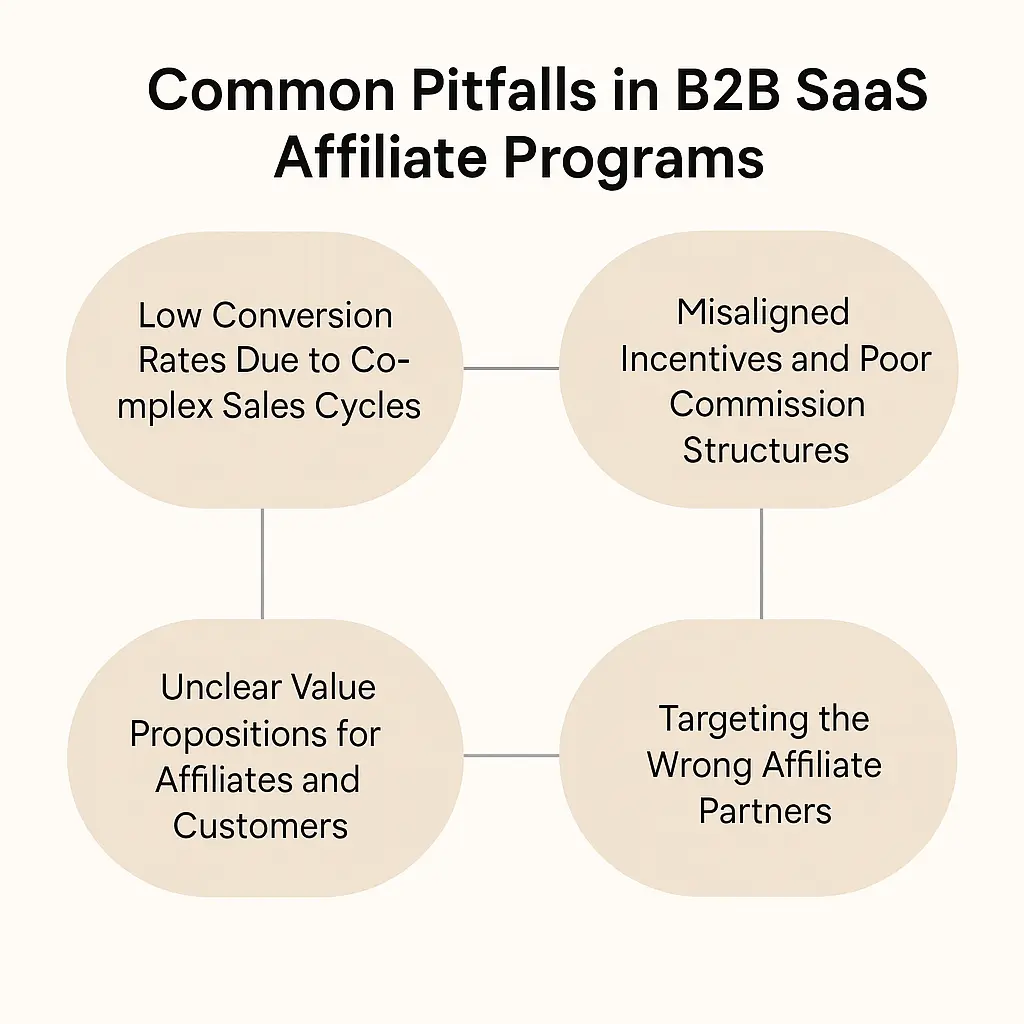
What Works in B2B SaaS Affiliate Marketing
While the challenges are real, they’re not insurmountable. Successful B2B affiliate programs hinge on strategic alignment, thoughtful incentives, and a focus on long-term relationships. Below are the key principles that drive results.
1. Focus on Recurring Revenue Models
Since SaaS thrives on subscription revenue, affiliate compensation should mirror this structure. A recurring commission model—where affiliates earn a percentage of a customer’s monthly or annual fees for as long as they remain active—motivates partners to bring in high-quality leads who stick around. For example, offering 20% of monthly revenue per referral for the first year can be far more appealing than a flat $100 signup bonus.
2. Optimize for Customer Lifetime Value (LTV)
Instead of obsessing over signup numbers, measure success by LTV. Affiliates should be rewarded for bringing in customers who upgrade plans, renew subscriptions, or refer others. This shifts the focus from quantity to quality, ensuring both parties benefit from sustained growth.
3. Provide Robust Support and Resources
Top-performing SaaS affiliates need more than just a referral link. Equip them with branded landing pages, case studies, email swipes, and webinar invitations to help them sell effectively. The easier it is for affiliates to promote, the more likely they are to prioritize your program.
4. Build Trust Through Transparency
B2B buyers are skeptical by nature. Ensure affiliates disclose their partnerships and provide honest reviews. Transparency not only builds credibility with prospects but also complies with regulations like the FTC’s endorsement guidelines. For more on compliance, check out the FTC Endorsement Guides.
Case Studies of Successful B2B SaaS Affiliate Programs
Some SaaS companies have cracked the code on affiliate marketing by aligning incentives and targeting the right partners. Let’s look at a few standout examples.
1. HubSpot: Education-First Approach
HubSpot, a leader in inbound marketing software, offers a tiered affiliate program with commissions up to $1,000 per sale. What sets them apart is their focus on educating affiliates. They provide free courses, certifications, and marketing materials, turning partners into product experts. This strategy drives trust and conversions among B2B buyers.
2. Shopify Plus: High-Ticket Recurring Commissions
Shopify’s affiliate program for its Plus tier (aimed at enterprises) offers recurring commissions for the lifetime of a referred customer. Affiliates earn 20% of subscription fees, incentivizing them to target high-value clients. This alignment with LTV has made Shopify a darling in the affiliate space.
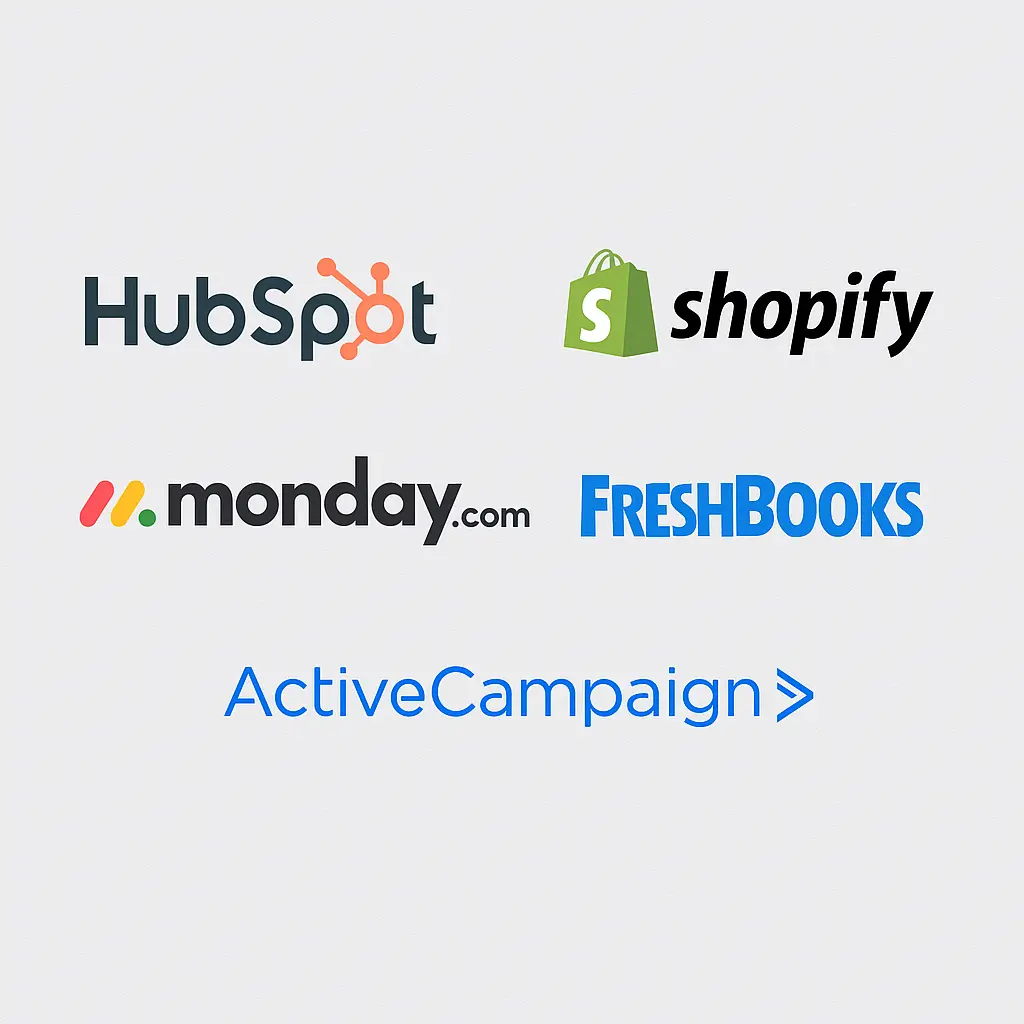
Key Takeaways from Successful Programs
- Offer tiered or recurring commissions to reflect the subscription model.
- Invest in affiliate education to boost their confidence and effectiveness.
- Target niche partners whose audiences align with your ideal customer profile.
How to Build a High-Performing B2B SaaS Affiliate Program
Creating a successful affiliate program requires careful planning and execution. Follow these steps to lay a strong foundation and avoid common pitfalls.
Step 1: Define Your Goals and Metrics
Start by clarifying what success looks like. Are you aiming for lead generation, customer acquisition, or brand awareness? Track metrics like affiliate-driven revenue, LTV of referred customers, and cost-per-acquisition (CPA). Clear goals help you measure impact and adjust strategies.
Step 2: Develop a Competitive Commission Structure
Research industry benchmarks to design a payout model that attracts top talent. Consider a hybrid approach: a one-time signup bonus plus a smaller recurring percentage. For example:
| Commission Type | Amount | Duration |
|---|---|---|
| Initial Signup Bonus | $150 | One-time |
| Recurring Commission | 15% of monthly fee | First 12 months |
Step 3: Recruit the Right Partners
Your affiliate partner strategy should focus on quality over quantity. Target industry influencers, niche bloggers, consultants, and complementary SaaS companies. Use tools like BuzzSumo or LinkedIn to identify thought leaders who already engage your ideal audience.
Step 4: Leverage Affiliate Software
Manual tracking is a recipe for errors. Invest in platforms like PartnerStack, Impact, or Refersion to automate tracking, payments, and reporting. These tools also provide affiliates with dashboards to monitor their performance, fostering engagement.
Step 5: Monitor and Optimize Continuously
Affiliate programs aren’t set-and-forget. Analyze which partners drive the most revenue, which content converts best, and where drop-offs occur in the funnel. Use these insights to refine your program—whether by adjusting commissions or offering seasonal bonuses.
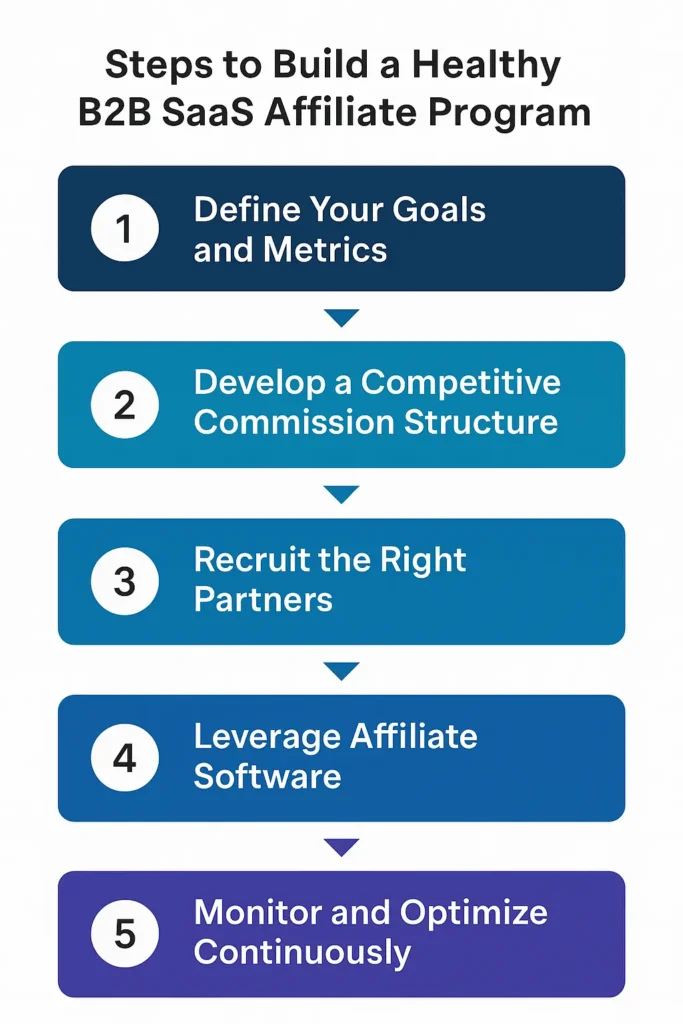
Outreach Templates for Partner Recruitment
Finding and onboarding the right SaaS affiliates starts with effective communication. Cold outreach can be daunting, but a personalized, value-driven message increases your chances of a response. Below are two templates you can adapt for recruiting potential partners.
Template 1: Email to Industry Bloggers
Subject: Partnership Opportunity with [Your SaaS Name]
Hi [Blogger Name],
I’m [Your Name] from [Your SaaS Name], a platform that helps [brief value prop, e.g., “marketing teams streamline campaigns with AI insights”]. I came across your blog, [Blog Name], and was impressed by your content on [specific topic]. Your audience seems like a perfect fit for our solution.
We’re launching an affiliate program offering [commission structure, e.g., “20% recurring commissions for the first year”] along with dedicated support and marketing resources. I’d love to chat about how we can collaborate to bring value to your readers.
Are you available for a quick call next week? Let me know what works for you.
Best regards,
[Your Name]
[Your Position]
[Your Contact Info]
Template 2: LinkedIn Message to Consultants
Hi [Consultant Name],
I noticed your work with [industry/niche] clients and thought you might be interested in a partnership with [Your SaaS Name]. We help [brief value prop], and our affiliate program offers [commission details] for referrals.
I’d love to share more about how this could benefit your network. Can we connect for a 15-minute chat? Looking forward to hearing from you.
Thanks,
[Your Name]
Tips for Effective Outreach
- Personalize each message—mention specific content or achievements.
- Keep it concise; busy professionals don’t have time for long pitches.
- Highlight mutual benefits, not just what’s in it for you.
- Follow up politely after 5-7 days if you don’t hear back.
Conclusion
Affiliate marketing in the B2B SaaS space is a powerful yet underutilized growth lever—but only when done right. Most programs fail due to misaligned incentives, poor targeting, and a lack of long-term focus. By addressing these issues with a robust affiliate partner strategy, a sustainable recurring commission model, and a commitment to supporting your SaaS affiliates, you can transform this channel into a consistent revenue driver.
Start by defining clear goals, recruiting the right partners, and optimizing for customer lifetime value over short-term wins. Draw inspiration from success stories like HubSpot and Shopify Plus, and don’t shy away from experimenting with outreach and incentives. The future of B2B affiliate programs lies in deeper collaboration—think co-branded content, joint webinars, and ecosystem partnerships. As the SaaS market grows ever more competitive, a well-executed affiliate program could be your edge. So, what’s your next step? Build, test, and refine—because in B2B SaaS, relationships are everything.
Ready to take your B2B affiliate game up a notch? Let’s talk today.
FAQs
How much should I budget for a B2B SaaS affiliate program?
Budget requirements for B2B SaaS affiliate programs vary widely based on company size and goals, but you should plan for three key components. First, commission payouts typically range from 15-30% of the customer’s first-year subscription value, with top-performing programs offering recurring commissions rather than one-time payments.
Second, allocate $5,000-$15,000 annually for affiliate management software like PartnerStack, Impact, or Refersion to track referrals and automate payments. According to PartnerStack’s 2023 data, companies using dedicated partnership platforms see 2.3x higher conversion rates than those using manual tracking.
Third, set aside resources for partner enablement—including marketing collateral, training materials, and support. Research by Forrester shows that partners with access to comprehensive enablement tools generate 48% more revenue than those without such resources. Many successful programs dedicate at least 10-15% of their total affiliate budget to support and enablement efforts.
What’s the average conversion rate for B2B SaaS affiliate programs?
B2B SaaS affiliate programs typically see lower conversion rates than B2C programs due to longer sales cycles and higher-ticket purchases. According to PartnerStack’s 2023 B2B Partnership Benchmark Report, the average visitor-to-trial conversion rate for affiliate-referred traffic is 1-3%, while trial-to-paid conversion rates average 15-25%.
However, these figures vary significantly by industry. Developer tools and technical SaaS products might see conversion rates below 1%, while marketing and sales tools often achieve 3-5% or higher when promoted by trusted affiliates.
Interestingly, while conversion rates are lower, the quality of affiliate-referred customers tends to be higher. Data from Impact’s partnership platform shows that B2B customers acquired through affiliate channels have a 25% higher lifetime value and 18% lower churn rate compared to other acquisition channels. This reinforces why successful affiliate programs focus on quality over quantity and optimize for long-term customer value rather than initial conversions.
How long does it typically take to see ROI from a B2B SaaS affiliate program?
Most B2B SaaS companies can expect to see initial return on investment from their affiliate programs within 6-9 months, though this timeline varies based on several factors. According to a 2023 survey by SaaS partnership platform Partnerstack, companies with mature affiliate programs report an average of 4.2 months to break even on program costs and 7.8 months to achieve positive ROI.
Programs focusing on higher-ticket enterprise solutions with longer sales cycles may take 9-12 months to show meaningful returns, while those targeting SMBs with simpler products might see results in as little as 3-4 months.
Key factors affecting ROI timeline include: average sales cycle length (typically 30-90 days for B2B SaaS), partner recruitment efficiency, commission structure, and the quality of onboarding and enablement. Companies that provide comprehensive partner training and marketing materials typically reach ROI 30-40% faster than those with minimal support resources.
Interestingly, affiliate program maturity plays a significant role as well. According to Impact’s partnership data, B2B SaaS affiliate programs tend to see exponential rather than linear growth after the 12-month mark, with year-two revenue typically 3-5x higher than year-one.
Who makes the best affiliates for B2B SaaS products?
The most effective affiliates for B2B SaaS products typically fall into five categories, each bringing unique advantages. Industry consultants and agencies consistently rank highest, with conversion rates 3-4x higher than general affiliates according to PartnerStack’s 2023 data. These partners already have trusted client relationships and can seamlessly recommend solutions as part of their service offering.
Industry-specific content creators—including bloggers, YouTubers, and newsletter publishers with focused B2B audiences—are the second most valuable category. The key is relevance: SaaS review site G2 reports that niche content creators with under 50,000 followers often outperform broader influencers with millions of followers.
Complementary SaaS companies make excellent affiliates through integration partnerships. HubSpot’s ecosystem of over 1,250 integration partners drives 40% of their new business through partner referrals.
Fourth, professional communities and membership sites serving your target audience can be gold mines. For example, Slack communities for specific professions have delivered conversion rates up to 8% for specialized SaaS tools.
Finally, don’t overlook your own customers. According to Influitive, existing customers who become affiliates tend to refer higher-quality leads with 25% higher lifetime value and 35% lower churn rates than other affiliate sources.
What metrics should I track to measure the success of my B2B SaaS affiliate program?
To effectively measure B2B SaaS affiliate program success, focus on these key metrics beyond basic click and conversion counts. First, track Customer Lifetime Value (CLV) of affiliate-referred customers compared to other acquisition channels. According to Impact’s 2023 data, successful programs see affiliate-referred customers with 15-30% higher CLV than their average customer.
Second, measure Customer Acquisition Cost (CAC) through your affiliate channel, factoring in commission payouts and program management expenses. Based on ProfitWell research, B2B SaaS companies with optimized affiliate programs typically achieve 20-40% lower CAC than through paid advertising channels.
Third, monitor activation and retention rates of affiliate-referred customers. Do they implement your product fully? Do they renew? Partner referrals should show equal or better retention than your baseline.
Fourth, track Revenue Per Affiliate (RPA) to identify your top performers. Industry benchmarks suggest that in mature programs, 20% of affiliates typically generate 80% of revenue.
Finally, measure Payback Period—the time it takes to recoup your costs for affiliate-acquired customers. According to SaaS Capital’s benchmarks, the average payback period for B2B SaaS overall is 18 months, but effective affiliate programs can reduce this to 9-12 months for referred customers.
How does a B2B SaaS affiliate program differ from a traditional referral program?
B2B SaaS affiliate programs and traditional referral programs differ in several fundamental ways. Affiliate programs involve partnerships with external third parties (often influencers, bloggers, or complementary businesses) who may have never used your product but have relevant audiences. These affiliates receive structured commission payments, typically 15-30% of the referred customer’s subscription value according to PartnerStack’s industry data.
In contrast, referral programs leverage existing customers to recommend your product to their peers and colleagues. These programs usually offer simpler incentives like account credits, subscription discounts, or smaller cash rewards (typically $50-250 per referral in the B2B space).
The sales and promotional approach also differs significantly. Affiliates actively market your product through content, comparisons, reviews, and dedicated landing pages, whereas referrals happen through more casual word-of-mouth or peer recommendations. According to Influitive’s research, affiliate-driven leads take 30% longer to convert but have 15-25% higher average contract values than referral-generated leads.
From a technical perspective, affiliate programs require more sophisticated tracking and payment systems, often using specialized software platforms like PartnerStack or Impact. Referral programs can operate with simpler in-product mechanisms or lightweight referral tools like ReferralCandy or Referral Rock.
What legal and compliance issues should I consider when launching a B2B SaaS affiliate program?
When launching a B2B SaaS affiliate program, several critical legal and compliance considerations must be addressed. First, create a comprehensive affiliate agreement that clearly outlines terms, prohibited marketing practices, commission structures, and payment timelines. Have this reviewed by legal counsel familiar with partnership marketing.
Second, ensure FTC compliance regarding disclosures. The Federal Trade Commission requires affiliates to clearly disclose their relationship with your company when promoting products. According to the FTC’s 2023 updated guidelines, disclosures must be clear, conspicuous, and unavoidable—not buried in terms and conditions or small print.
Third, consider data privacy regulations like GDPR, CCPA, and other regional laws. Your affiliate program will involve collecting and sharing user data across platforms, requiring proper consent mechanisms and data processing agreements. The average fine for GDPR violations related to marketing partnerships increased by 40% in 2022-2023.
Tax compliance is another critical area. You’ll need to collect W-9 forms (or W-8BEN for international affiliates) and issue 1099 forms to US-based affiliates earning over $600 annually. Using dedicated affiliate software can help automate this process.
Finally, industry-specific regulations may apply if you operate in sectors like healthcare, finance, or education. For instance, HIPAA compliance requirements extend to how healthcare SaaS companies structure their affiliate partnerships and what claims affiliates can make about the software.

